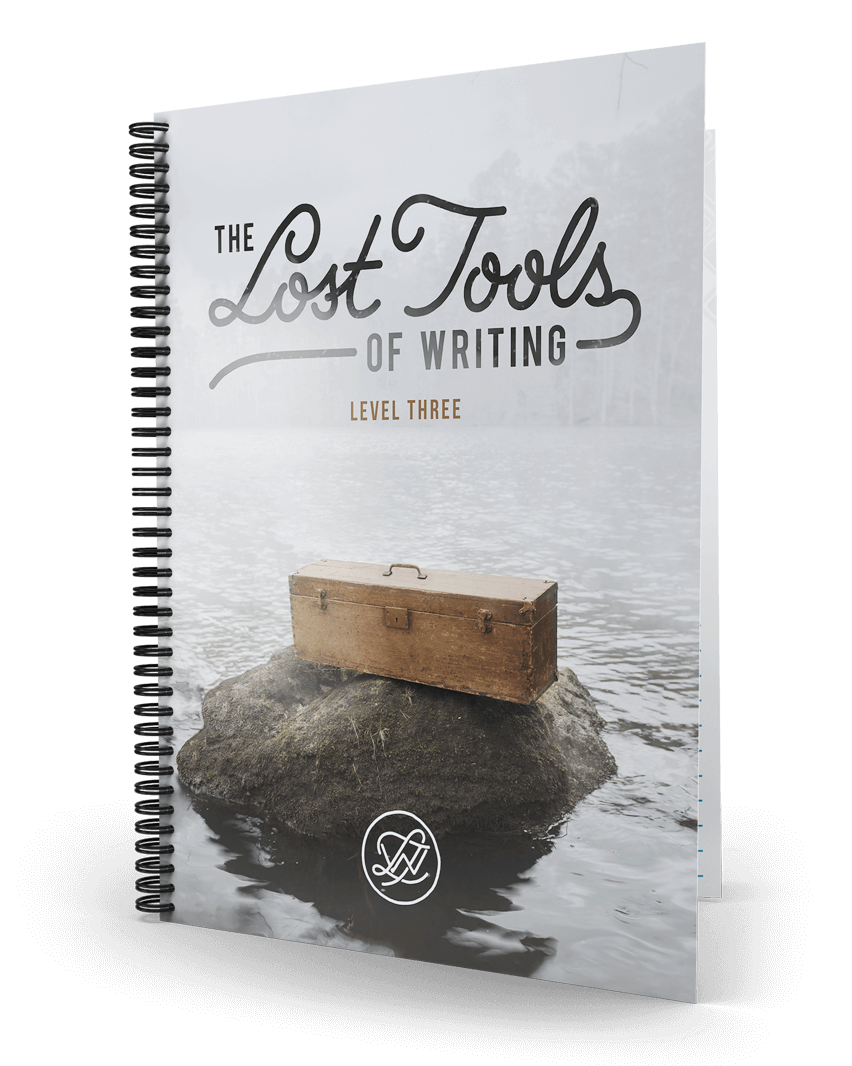Lost Tools of Writing Level III Workbook
$47.00
Availability: In stock
All-in-one combination Student Workbook/Teacher Guide. Level Three does not have separate workbooks/guides. 378 pages.
Welcome to The Lost Tools of Writing Level III, the next stage on your journey to mastery of thought and communication. Through LTW III, you’ll solidify the foundations that you laid in LTW I and II, develop advanced writing skills, master additional forms of persuasive address, and even begin to practice tools you’ll use for the arts of verse and storytelling. Most importantly, the skills you gain through LTW III extend beyond academics to your life in the world and the deeper questions you ask in your heart and mind.
The heart of The Lost Tools of Writing Level III is the deliberative address, the immediate purpose of which is to determine whether an action should be taken. The bigger purpose is to grow in wisdom and prudence by practicing making difficult decisions from which you can learn principles and habits of decision making for your own life and community.
When you write your deliberative address, you practice thinking imaginatively and strategically.
Click Here to View a Sample Chapter
Thinking Imaginatively
In LTW III, you imaginatively enter a historical or literary situation, in which you assume a perspective, generate an issue, find a necessary question, and attempt to persuade your audience (the decision-maker) to act: either to implement a change (the proposal) or to maintain the status quo. To do so, you will need to get to know your audience and then present the advantages: honor and/or utility.
As always, you develop your argument through invention, using the common topics already learned plus the special topics that apply to a deliberative address. In addition, you will add three new and powerful tools to your box: the modes of persuasion, the four causes, and analogical reasoning.
As we mentioned above, perhaps the most significant difference between judicial and deliberative thinking is that the former is directed toward the past and the latter is directed toward the future. The problem you run into when you have to make decisions about the future is obvious: you don’t know it. In real life, that means any decision you make is, to some extent, uncertain. It takes maturity to accept this when an issue matters to you.
It raises yet another challenge for you when you deliberate about a narrative: when you have completed a story, you know the whole thing, including what follows your issue. You know the future, but your audience, being stuck in the world of the story, does not.
To make your address more realistic, therefore, you must pretend (you can think about the irony of that later!). Specifically, when you develop your LTW III addresses, you pretend that you are in the same time frame and location as your audience, which means that you also do not know the future, including the outcome of your proposal.
By pretending in this way, you create an artificial limitation on your own knowledge that matches the real limitation we all experience in reality.
Practically, that means that for the sake of the LTW III deliberative address, neither you nor your audience can know or use any information or events that happen from that point forward. You are allowed to make predictions about possible results to a decision, but you cannot say that something will happen because it happened in the story. You will read how to do this in Invention Step Three below.
In short, you pretend to meet the decision-maker in his situation where you assume a perspective and deliberate on the issue so that you can persuade him to act on your thesis (e.g., Hamlet should or should not kill Claudius in the chapel). You build your case with an eye to an unknown future.
Please note that we use the terms “audience” and “decision-maker” interchangeably. Your goal is to persuade this audience or decision-maker. The mention of a goal gives rise to the idea of strategic thinking, which includes identifying goals and the means to reach them.
Thinking Strategically
When you develop your deliberative address, your goal is to convince your audience to perform an action. You must make a strong case and present it to your audience in a compelling manner. When you have done so, you have written a successful address.
The overall strategy of a deliberative address
When you seek to show a decision-maker that he should or should not act in a particular way, you must first persuade yourself, then your audience.
To do so, you ask a few questions:
- What is the necessary question?
- What is the issue?
- What is the status quo?
- What do the common topics reveal about the issue?
- What are the potential advantages or disadvantages to be experienced by the decision-maker and/or the community through the proposal and through the status quo?
- What do the principles of logic, the four causes, and analogical reasoning contribute to my deliberations?
In addition, you will learn to use principles of logic to further develop both sides of your argument. These are explained in detail in the lessons; however, here are some questions that logic gives rise to:
- If the thesis and proof, and the counter-thesis and refutation are converted into a syllogism, what premises are revealed?
- Are the assumed premises true?
- How can they be proven or refuted?
- What additional propositions can be derived from the ideas already generated?
Once you have completed your invention and chosen a side to defend, you fashion your argument in a way that is easy to follow and that emphasizes the most important points. The deliberative outline is essentially the same as the other persuasive outlines, but you will adapt the elements (amplification, narratio, proof, etc.) to the needs of the deliberative address. Details on the elements can be found in the lessons.
Finally, your argument deserves and needs to be expressed appropriately, which means clearly, coherently, cohesively, and effectively. You ask questions like the following:
- Does the sentence express its idea clearly and efficiently?
- Is each paragraph coherent (i.e., does it communicate a single idea)?
- Is each paragraph cohesive (i.e., do its sentences link in an orderly, logical sequence)?
- Are the schemes and tropes used in appropriate ways and places in the address?
Canadian Customers, save on shipping through our preferred Canadian Distributor, Classical Education Books.
You may also like…
-
Lost Tools of Writing Level Three
Lost Tools of Writing Level III Complete Set
$67.00 Select Options









